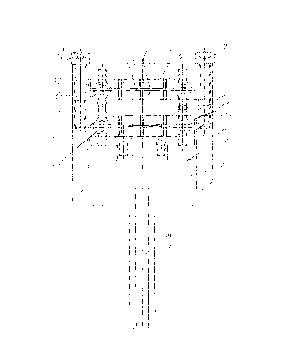Une partie des informations de ce site Web a été fournie par des sources externes. Le gouvernement du Canada n'assume aucune responsabilité concernant la précision, l'actualité ou la fiabilité des informations fournies par les sources externes. Les utilisateurs qui désirent employer cette information devraient consulter directement la source des informations. Le contenu fourni par les sources externes n'est pas assujetti aux exigences sur les langues officielles, la protection des renseignements personnels et l'accessibilité.
L'apparition de différences dans le texte et l'image des Revendications et de l'Abrégé dépend du moment auquel le document est publié. Les textes des Revendications et de l'Abrégé sont affichés :
| (12) Demande de brevet: | (11) CA 2203975 |
|---|---|
| (54) Titre français: | CAPTEUR DE PRESSION CAPACITIF |
| (54) Titre anglais: | CAPACITIVE PRESSURE TRANSDUCER |
| Statut: | Réputée abandonnée et au-delà du délai pour le rétablissement - en attente de la réponse à l’avis de communication rejetée |
| (51) Classification internationale des brevets (CIB): |
|
|---|---|
| (72) Inventeurs : |
|
| (73) Titulaires : |
|
| (71) Demandeurs : |
|
| (74) Agent: | AVENTUM IP LAW LLP |
| (74) Co-agent: | |
| (45) Délivré: | |
| (22) Date de dépôt: | 1997-04-29 |
| (41) Mise à la disponibilité du public: | 1998-05-25 |
| Licence disponible: | S.O. |
| Cédé au domaine public: | S.O. |
| (25) Langue des documents déposés: | Anglais |
| Traité de coopération en matière de brevets (PCT): | Non |
|---|
| (30) Données de priorité de la demande: | ||||||
|---|---|---|---|---|---|---|
|
Le présent brevet vise un capteur de pression capacitif composé d'une première capacité munie d'une plaque qui peut bouger sous l'effet d'une pression et d'une plaque fixe, et d'une seconde capacité dotée de deux plaques fixes, une plaque de la deuxième capacité et la plaque fixe de la première capacité étant liées au même support, d'une première structure pour déplacer la plaque mobile, d'un élément support pour la deuxième plaque de la seconde capacité, les masses de l'élément support de la seconde plaque et de la première structure commandant le déplacement de la plaque mobile étant à peu près équivalentes.
A capacitive pressure transducer comprising a
first capacitor having a plate which is movable under
the influence of pressure and a fixed plate, and a
second capacitor having a pair of fixed plates, one
plate of the second capacitor and the fixed plate of the
first capacitor being fixed to a common support, a first
structure for moving the movable plate, a support
structure for a second plate of the second capacitor,
masses of the support structure for the second plate and
of the first structure for moving the movable plate
being approximately equal.
Note : Les revendications sont présentées dans la langue officielle dans laquelle elles ont été soumises.
Note : Les descriptions sont présentées dans la langue officielle dans laquelle elles ont été soumises.

2024-08-01 : Dans le cadre de la transition vers les Brevets de nouvelle génération (BNG), la base de données sur les brevets canadiens (BDBC) contient désormais un Historique d'événement plus détaillé, qui reproduit le Journal des événements de notre nouvelle solution interne.
Veuillez noter que les événements débutant par « Inactive : » se réfèrent à des événements qui ne sont plus utilisés dans notre nouvelle solution interne.
Pour une meilleure compréhension de l'état de la demande ou brevet qui figure sur cette page, la rubrique Mise en garde , et les descriptions de Brevet , Historique d'événement , Taxes périodiques et Historique des paiements devraient être consultées.
| Description | Date |
|---|---|
| Inactive : Demande ad hoc documentée | 2018-06-06 |
| Exigences relatives à la révocation de la nomination d'un agent - jugée conforme | 2018-05-18 |
| Exigences relatives à la nomination d'un agent - jugée conforme | 2018-05-18 |
| Inactive : CIB de MCD | 2006-03-12 |
| Inactive : CIB de MCD | 2006-03-12 |
| Le délai pour l'annulation est expiré | 2002-04-29 |
| Demande non rétablie avant l'échéance | 2002-04-29 |
| Réputée abandonnée - omission de répondre à un avis sur les taxes pour le maintien en état | 2001-04-30 |
| Inactive : Inventeur supprimé | 2000-06-28 |
| Lettre envoyée | 1999-05-14 |
| Inactive : Transferts multiples | 1999-03-10 |
| Demande publiée (accessible au public) | 1998-05-25 |
| Inactive : CIB attribuée | 1997-07-31 |
| Inactive : CIB en 1re position | 1997-07-31 |
| Lettre envoyée | 1997-07-24 |
| Inactive : Certificat de dépôt - Sans RE (Anglais) | 1997-07-24 |
| Date d'abandonnement | Raison | Date de rétablissement |
|---|---|---|
| 2001-04-30 |
Le dernier paiement a été reçu le 2000-04-11
Avis : Si le paiement en totalité n'a pas été reçu au plus tard à la date indiquée, une taxe supplémentaire peut être imposée, soit une des taxes suivantes :
Les taxes sur les brevets sont ajustées au 1er janvier de chaque année. Les montants ci-dessus sont les montants actuels s'ils sont reçus au plus tard le 31 décembre de l'année en cours.
Veuillez vous référer à la page web des
taxes sur les brevets
de l'OPIC pour voir tous les montants actuels des taxes.
| Type de taxes | Anniversaire | Échéance | Date payée |
|---|---|---|---|
| Enregistrement d'un document | 1997-04-29 | ||
| Taxe pour le dépôt - générale | 1997-04-29 | ||
| TM (demande, 2e anniv.) - générale | 02 | 1999-04-29 | 1999-03-03 |
| Enregistrement d'un document | 1999-03-10 | ||
| TM (demande, 3e anniv.) - générale | 03 | 2000-05-01 | 2000-04-11 |
Les titulaires actuels et antérieures au dossier sont affichés en ordre alphabétique.
| Titulaires actuels au dossier |
|---|
| EMS TECHNOLOGIES CANADA, LTD. EMS TECHNOLOGIES CANADA, LTEE |
| Titulaires antérieures au dossier |
|---|
| DAVID J. FRIBERG |